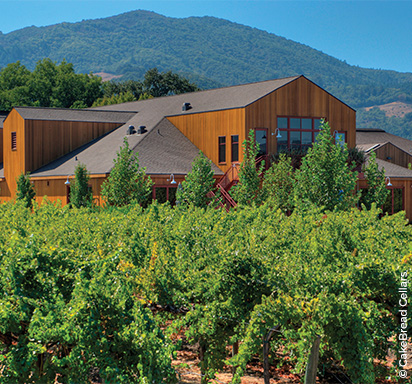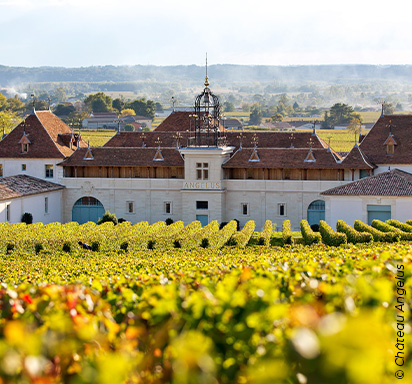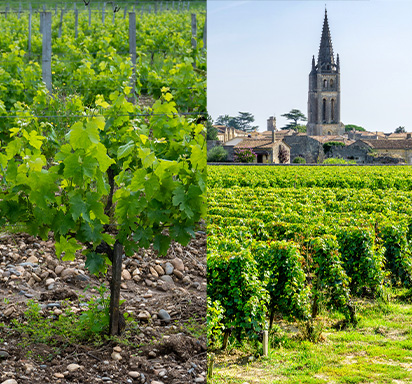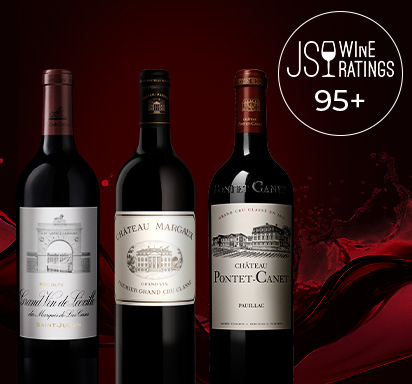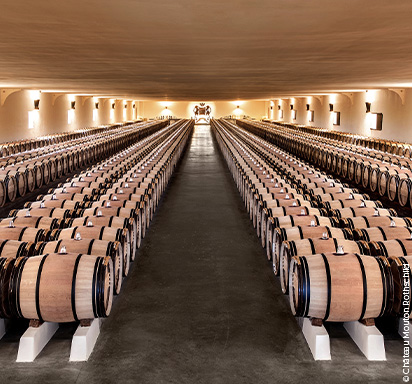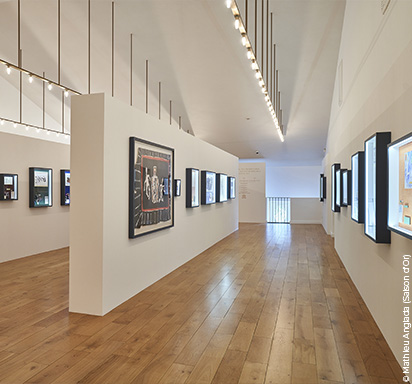Château Lafite-Rothschild: Bordeaux Excellence
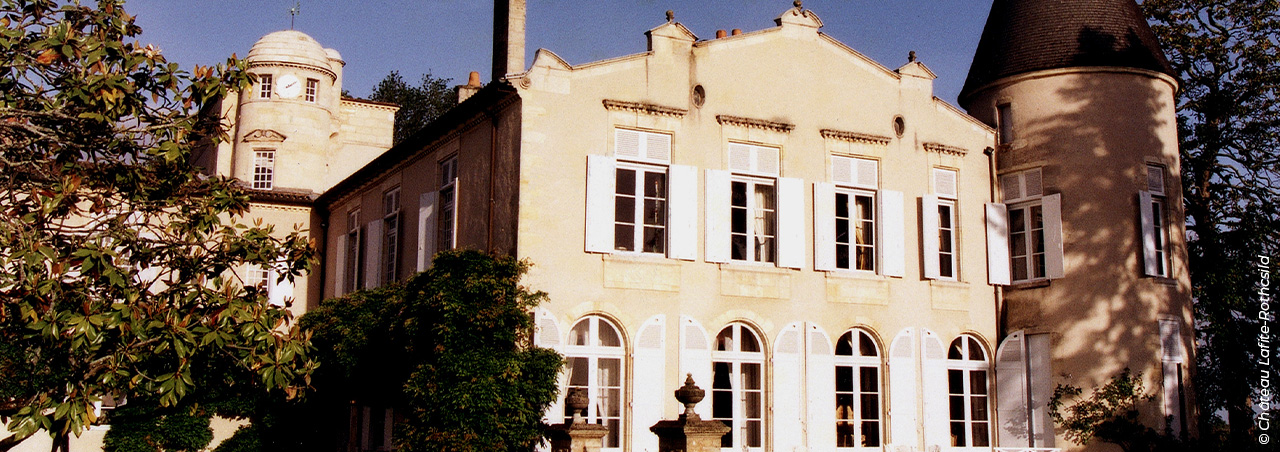
Explore Château Lafite-Rothschild, an icon of Pauillac and a symbol of Bordeaux perfection. From its 17th-century roots to its refined terroir, learn how this Premier Grand Cru continues to define fine wine excellence.
All you need to know about Château Lafite-Rothschild
A Pauillac Estate Defined by Exceptional Terroir
Few names in fine wine evoke as much admiration as Château Lafite-Rothschild. A true symbol of French heritage and craftsmanship, this Premier Grand Cru Classé represents the pinnacle of Bordeaux’s Left Bank winemaking. From its extraordinary terroir near the Gironde Estuary to its centuries-old history, Château Lafite-Rothschild embodies the perfect harmony between nature, tradition, and innovation.
An Ideal Location Near the Gironde Estuary
Fine wines are born from exceptional terroirs, and Château Lafite-Rothschild enjoys one of the most privileged in the Médoc. The vineyard covers 112 hectares (about 277 acres) within the Pauillac appellation, close to the Gironde Estuary. Its vines stretch from the slopes surrounding the château to the Carruades plateau to the west and a parcel in the neighboring commune of Saint-Estèphe. This diverse topography and soil composition give the wine its signature depth, finesse, and balance.
17th Century Origins and the Ségur Family Legacy
The estate’s origins trace back to the 17th century when Jacques de Ségur began planting vines in the 1670s and 1680s. His descendants elevated Lafite’s reputation, particularly Alexandre de Ségur and his son Marquis Nicolas Alexandre de Ségur, who brought the wines to prominence at the court of Versailles. Known as “The Prince of Vines,” Nicolas Alexandre crafted wines so refined they became known as “The King’s Wine.”
18th Century Prestige and Transatlantic Fame
By the 18th century, Château Lafite had become synonymous with luxury and refinement. Its reputation crossed the Atlantic after Thomas Jefferson, then U.S. ambassador to France, praised Lafite during his 1787 visit to Bordeaux. His writings helped establish the château’s fame in America, where it remains one of the most admired Bordeaux wines.
The French Revolution and the 1855 Classification
Following the French Revolution, Château Lafite changed ownership several times before being recognized in Napoleon III’s 1855 Bordeaux Classification as “the premier of the premiers crus.” This official title confirmed its status as the most prestigious estate in the Médoc and among the greatest wines in the world.
The Rothschild Era Begins in 1868
A new chapter began in 1868 when Baron James de Rothschild purchased Château Lafite. Although he passed away three months later, his sons Alphonse, Gustave, and Edmond continued his vision. The late 19th and early 20th centuries brought challenges — including phylloxera, world wars, and economic crises — yet the Rothschilds preserved the estate’s integrity. After World War II, Baron Élie de Rothschild led major restorations and helped revive Bordeaux’s global prestige.
Modernization Under Baron Eric de Rothschild
In the 1970s, Baron Eric de Rothschild, Élie’s nephew, took over management of the estate. His leadership ushered in a new era of technical innovation and sustainability. He modernized winemaking facilities and introduced more precise vineyard practices. In 1987, he inaugurated the château’s striking octagonal cellar, designed by architect Ricardo Bofill, blending modern architecture with timeless tradition.
The Unique Terroir of Pauillac
The Château Lafite-Rothschild vineyard lies in the Pauillac appellation on Bordeaux’s Left Bank, benefiting from a mild oceanic climate. The fine, deep gravel soils rest on a limestone base that ensures perfect drainage and mineral complexity. The vines, averaging 40 years old, consist mainly of Cabernet Sauvignon, with Merlot, Cabernet Franc, and Petit Verdot rounding out the blend. Grapes from younger vines, about 10 years old, are excluded from the Grand Vin to ensure uncompromising quality.
Meticulous Vinification and Aging
Each parcel is harvested and vinified separately to preserve its unique character. Alcoholic fermentation occurs in both oak and stainless-steel vats, followed by malolactic fermentation in a dedicated room. The wine is aged for 18 to 20 months in new oak barrels crafted at the estate’s own cooperage. Every stage, from blending to bottling, reflects Château Lafite-Rothschild’s pursuit of precision and harmony.
The Distinctive Style of Château Lafite-Rothschild
Wine profile
Baron Eric de Rothschild once said: “Lafite has a soul — a beautiful soul, tender and generous. Lafite turns the earth into a dream.” Each vintage captures that dream. The Grand Vin showcases structure, depth, and elegance, while the second wine, Carruades de Lafite, offers a more approachable yet still refined expression of the estate’s character. Both reflect the purity and balance that define Lafite’s timeless style.
Aging Potential and Ideal Serving Conditions
Château Lafite-Rothschild wines are renowned for their extraordinary ability to age. In their youth, they reveal vibrant fruit and freshness; over decades, they evolve into layered expressions of cedar, graphite, spice, and violet. To fully enjoy their complexity, decant the wine at least two hours before serving at a temperature of 60–65°F (16–18°C).
How Much Is a Bottle of Château Lafite-Rothschild?
The price of a bottle of Château Lafite-Rothschild varies greatly depending on the vintage and provenance. On average, recent vintages retail between $600 and $1,500 per bottle, while exceptional years such as 1982, 2000, 2009, and 2010 can fetch $2,000 to over $10,000. Older, rare vintages from the 19th or early 20th century can exceed $10,000 at auction. Its consistent quality and legendary reputation make it one of the world’s most collectible fine wines.
Why Is the 1982 Lafite-Rothschild So Expensive to Buy?
The 1982 vintage of Château Lafite-Rothschild is widely regarded as a landmark year, producing wines with exceptional richness, balance, and longevity. Its scarcity, global demand, and historic acclaim contribute to high prices, often reaching several thousand dollars per bottle. Collectors prize this vintage for its perfect aging potential and consistent quality.
Which Year of Lafite-Rothschild Is the Best?
While taste is subjective, several vintages are considered iconic, including 1982, 2000, 2009, and 2010. These years combined favorable weather conditions with optimal grape quality, resulting in wines with remarkable depth, elegance, and aging potential that continue to impress critics and collectors alike.
What Is the Most Expensive Bottle of Lafite-Rothschild?
Some of the rarest bottles of Château Lafite-Rothschild can fetch extraordinary prices at auction. For example, a 1869 bottle sold for €218,000 at an auction in Hong Kong. Such historic bottles are prized for their rarity, provenance, and the prestige associated with Lafite, making them ultimate collector’s items.
Who Owns Château Lafite-Rothschild Today?
Château Lafite-Rothschild remains family-owned by the Rothschild dynasty, under the company Domaines Barons de Rothschild (DBR). Since 2021, Saskia de Rothschild, the daughter of Baron Eric de Rothschild, has led the estate, marking the sixth generation of Rothschild family stewardship. She continues to honor her family’s legacy while focusing on sustainable viticulture and global innovation, ensuring Lafite’s excellence for future generations.
Where to Buy Château Lafite-Rothschild in the USA?
For wine enthusiasts in the United States looking to acquire Château Lafite-Rothschild, several trusted retailers offer access to recent and older vintages. One of the most reputable sources is Millesima USA, the American branch of the well-known European fine wine merchant. Millesima USA provides authenticated bottles of Château Lafite-Rothschild, including the latest vintages and rare collector editions, ensuring safe shipping and professional storage. Many wine collectors and connoisseurs turn to Millesima for its reliability, extensive selection, and expertise in fine Bordeaux wines.
A Timeless Symbol of Bordeaux Excellence
For more than three centuries, Château Lafite-Rothschild has stood as a benchmark of elegance, quality, and craftsmanship. Its wines — refined, balanced, and deeply expressive — embody the spirit of Bordeaux’s finest terroirs.
You may like
Discover the legacy of Cakebread Cellars, a Napa Valley family winery. From Rutherford vineyards to award-winning wines, the Cakebreads combine craftsmanship, sustainability, and innovation.
10/16/2025Chateau Angelus, one of Saint-Emilion’s top Premier Grand Cru Classe A estates, offers exceptional Bordeaux wines from organic vineyards, rich history, and a legacy of family winemaking excellence.
10/6/2025The exceptional concentration of top-tier wineries and renowned appellations has long made Bordeaux a place of longing for fine wine enthusiasts and discerning hedonists around the world.
4/18/2025During his recent visit to Bordeaux, the famous American wine critic, James Suckling, toured the vineyards to rediscover the 2022 vintage: discover James Suckling's new ratings in this article!
2/19/2025Explore the finest vintages of Château Mouton Rothschild, from the legendary 1945 to the acclaimed 2018. This guide offers insights into what makes each vintage unique, perfect for collectors, investors, and wine enthusiasts.
12/20/2024Château Mouton Rothschild’s wine labels include designs by famous artists such as Warhol and Dalí. This tradition, started in 1945, celebrates the harmony of fine wine and fine art, making each bottle a collector’s treasure.
12/18/2024



